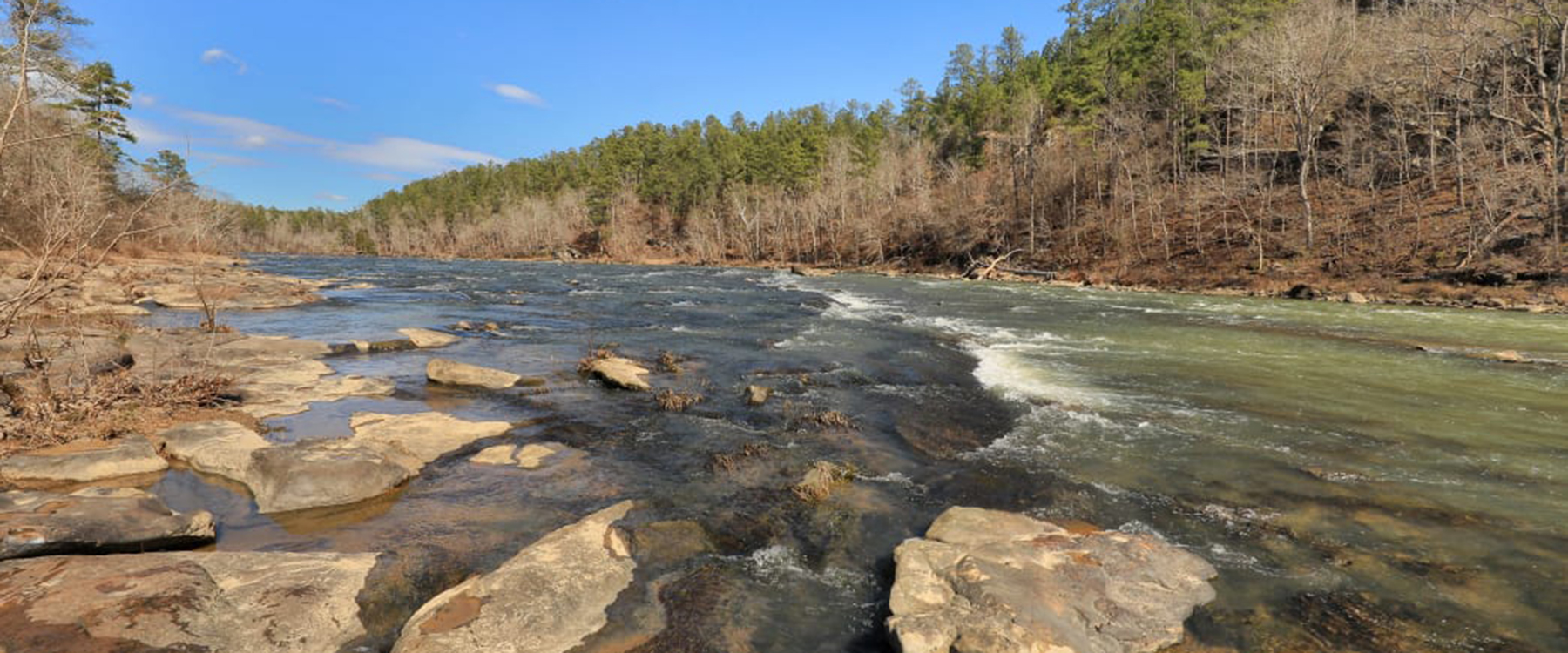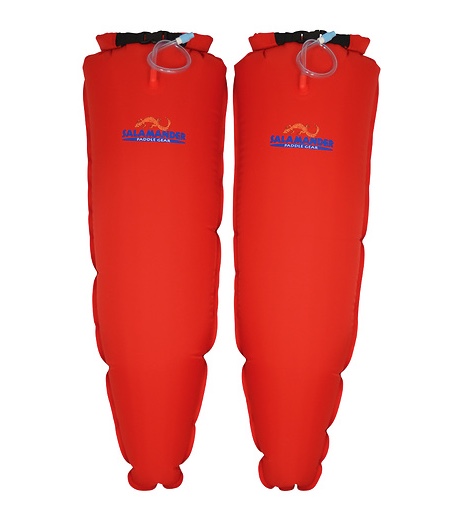Stretching 194 miles from Trussville to Selma, the Cahaba River is not only the longest unimpeded river in the state, but it’s also one of the most biologically diverse waterways in the United States.
According to biologists, the Cahaba has more species of fish per mile than any other river in the country. Plus, it’s home to 69 rare species of plants, including the Cahaba Lily, which only grows in Alabama, Georgia and South Carolina.
Each spring, people flock to the Cahaba to photograph the lilies, but the river is also a great place to kayak, fish, or just float and relax. If you need a quick, overnight getaway, you can also camp along the river.
In early June, I did an overnight kayak trip on the Cahaba with a group of buddies. Our plan was to paddle a total of 14 miles and camp at the halfway point. Making our way slowly, we’d indulge in some easygoing floating and fishing, and have fun negotiating a few modest rapids. If we were lucky, we might also get to enjoy the lilies in bloom.

Around Noon on Saturday, we put our boats in the water at a place called the "Old Slab," near Helena, Alabama, about 30 miles southwest of Birmingham. Back in the day, the stone slab was used to transport mining equipment across the river. At normal water levels, the slab is just barely submerged, and there are a few significant holes in the stone. Local four-wheeling enthusiasts swarm the area to attempt to cross the slab and to ride the network of trails on the both sides of the river. It’s currently maintained as a Wildlife Management Area.
Because we were only traveling about 7 miles, we had plenty of time to have a leisurely float and try a few rope swings along the way. In the slower sections of water, I took the opportunity to wet a line and managed to hook up with some fun little bass hanging out in deep pockets. I found that white/olive wooly buggers worked on my fly rod, and I used soft plastic flukes on conventional tackle.

Eventually, we reached the popular Halfmile Shoals area, where you’ll find a heavy concentration of Cahaba Lilies. Fortunately, the flowers were blooming when we arrived.
This rare form of spider lily grows in the shoal areas above the "fall line," where the hard rocks of the Appalachian highlands meet the sand and gravel of the coastal plain. The white flowers are about as big as your palm and only grow in areas with swift water and abundant sunlight.
After we paused to see the lilies, we continued downstream a short distance and reached our campsite with plenty of daylight remaining.
Along this stretch of river, there are numerous places where you can camp on rocks and sandbars, but be cognizant of private property. If a landowner doesn’t give you permission to camp in a specific place, you should scout the river using a GPS and consult the Cahaba River Society and Cahaba River Designs to determine where you can stay.

On Sunday morning we were on the river by 8 a.m., ready to take on some slightly more technical stretches of river, including the largest rapid of the trip—a shoal that drops off as the river passes between large concrete pilings. During our journey, we encountered several of these drop-offs, and most of them top out around a Class II after a good rain.
As you travel this part of the Cahaba, you’ll also encounter several shoals that force people to drag or carry their boats, especially when the water is running low. During our outing, the water was relatively high at 1250 to 1400 CFS, so we lucked out and faced few portages.
By the early afternoon, we had successfully navigated the rapids and arrived at our takeout point at the Cahaba River National Wildlife Refuge. Because this spot has a boat ramp and goods roads, it’s an ideal access point. Also, the refuge is just a short drive from main roads and the small town of West Blocton.
With the sun still burning bright, we steered toward home, happy to have escaped a while and experienced the best the Cahaba has to offer, with its fine fishing, lively currents and brilliant displays of the Cahaba Lily.

IF YOU GO:
Do your research. It always pays to have the details nailed down ahead of time. Researching the logistics like access for put in/take out points, parking, camping spots, major water features, rentals/shuttles, etc. always helps make a trip go smoother. The Cahaba River Society, Cahaba River Designs and Mountain High Outfitters are great resources.
Check water levels. The average flow for the Cahaba is around 400 CFS, according to the Cahaba River USGS gauge at Centerville. In the summer months, the water is usually lower, so it’s best to go after a good rain, although the tradeoff is muddier water. For water levels, you can also check out the Cahaba River USGS gauge at Helena.
Written by Thomas Lambert for RootsRated in partnership with BCBS of AL and legally licensed through the Matcha publisher network. Please direct all licensing questions to legal@getmatcha.com.
Salamander Ultranighter Bags - Flotation and Dry storage bags to make any overnight kayak trip go smooth. These are available in Small and Large.
Newly re-designed with a separate sealed bladder from the storage area. Now you can pack your gear, roll down and close the bag, stuff it in your boat and blow up the bladder. This keeps your gear sealed and dry while the separate bladder holds you gear in place without losing any air! Designed to keep your supplies dry and protected from water brought in by boat condensation, capsize, or hull leakage. Made from 210 Denier PU Laminated Oxford Fabric that ensures the bags are lightweight and strong. The tapered shape of the bags allow them to pack tightly into difficult spaces, maximizing the dry storage potential of all boats. These Large bags are large enough to hold a sleeping bag. 2 bags per set. Click here to order online.



Comments